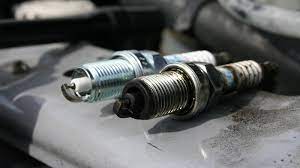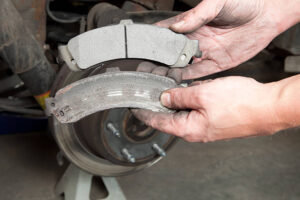
If you want your vehicle’s performance to continue smoothly, spark plug replacement is a must. Spark plugs are responsible for creating an electric arc that ignites the fuel mixture and then provides the power necessary for the crankshaft to turn and the vehicle to move. For DIY enthusiasts who wish to take on automotive maintenance, it is essential to learn how to change sparkplugs.
Although changing spark plugs is not as simple as changing a battery, it is easy enough for DIYers to learn how to remove sparkplugs and install sparkplugs in their vehicles. This saves time and money, which could otherwise be spent at an auto repair shop. These steps will show you how to replace sparkplugs.
BEFORE
Spark plugs will naturally wear over time. However, they can usually last between 20,000 and 30,000 miles. Depending on the manufacturer and vehicle, some spark plugs can last for up to 100,000 miles. To find out the limit of your vehicle’s sparkplugs, consult the owner’s guide.
You should also look out for signs such as poor fuel economy, trouble starting your vehicle, low acceleration, and the check engine lamp coming on. Also, you should be able to hear the engine make rough noises when it is idling. You should replace your spark plugs if you see any of these symptoms.
STEP 1. Park your vehicle and locate the sparkplugs.
You will need enough space for your work to be done if the vehicle is not parked in a garage or driveway. Turn the ignition off and remove the keys. Then, turn the parking brake on to allow the engine to cool down before you begin to work on it. After the engine has cooled down, open the bonnet and disconnect the negative battery terminal. Look for the bundle of four to eight wires that leads to the engine compartment.
You may need to take off engine covers on some vehicles to reach the spark plugs. For details on the location of the sparkplugs and the recommended gap size for them, see the owner’s manual. To prevent dirt, grime, and other debris from getting into the spark plug pockets, it’s a good idea to use a vacuum or compressor. To keep yourself safe, wear gloves, safety glasses, and long sleeves.
STEP 2 – Label the leads and inspect them
To avoid mingling the wires, it is important to properly label your spark plugs and wires when learning how to change them. Incorrectly installing spark plugs can cause engine problems, including misfires and damage to the O2 sensor.
This problem can be avoided by clearly labeling wires or leads to ensure that they are in the right order. You can also inspect the leads for cracks and other damage.
STEP 3 – Remove the old spark plugs.
There are two main steps to spark plug removal. The first step is to remove each spark plug boot once in a while and then double-check that they are properly labeled. It is usually made from silicone and sits at either the end or the tip of the wire. You can save the wire by grasping the insulator and not pulling on the wire.
To remove spark plugs, use a ratcheting wrench that includes a socket wrench extension and a spark socket. The magnetic base of a spark plug socket is often used to secure the spark plug during removal and installation. This accessory is essential for fast, efficient spark plug replacement.
STEP 4 – Check the wires, and clean the terminals.
It is a good idea to remove the old spark plugs and inspect the wires for signs of wear, cracking, or other damage. You can also clean any debris from the terminals with a fine wire brush. It is important to inspect and clean the wires before they are installed again.
STEP 5 – Inspect the old spark plugs.
You can skip this step if you plan to replace all spark plugs, regardless of condition. However, it is a good idea to inspect any old spark plugs before you replace them. To ensure that the spark plug’s center electrode is properly shaped and balanced, use a sparkplug gap tool to measure how much space there is between the side and center electrodes.
To determine the proper spark plug gap, refer to your owner’s manual. If the spark plugs are worn, misshapen, or old, replace them.
STEP 6 – Install the new sparkplugs.
To double-check the gap between the new spark plugs and to adjust them to the right gap distance before installing the plugs in your vehicle, a spark plug gap tool will be necessary. Install the spark plugs using an extension bar or socket. Then, the hand tightens them gently. If the plugs are not fitting in properly, you can loosen the spark plug and try again.
Once the spark plugs are hand-tightened, use a torque wrench to tighten the spark plugs to the manufacturer-specified torque level. The labels will help you to correctly attach each plug boot to the correct spark plug. Make sure to clean up all tools and debris from the engine and the surrounding areas.
STEP 7 – Start the engine to check the spark plugs.
Before closing the hood, make sure you have taken out all the tools. To test the spark plugs, turn on the engine. The car should normally start if everything goes smoothly during installation. However, if spark plugs are not tightened or installed properly, they could cause misfires.
You should immediately turn off the engine if you see any of these warning signs. Make any corrections and run the engine again. To avoid any further damage to your engine, take your vehicle to an automotive repair shop.
Regular maintenance will extend the life of spark plugs.
While spark plugs should be replaced at manufacturer-specified intervals, it’s still important to conduct regular maintenance to be certain that the spark plugs won’t need to be replaced before this point. Maintaining a smooth engine is one of the best ways to prolong the life of your sparkplugs.
Regular tune-ups are important to avoid any wear and tear. Fluid leaks from the engine’s top can cause contamination of the spark plugs. It is important to repair any leaks immediately to prevent having to replace them prematurely.
















